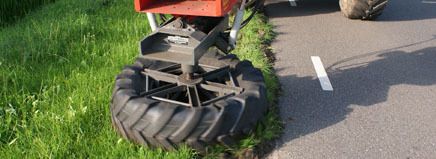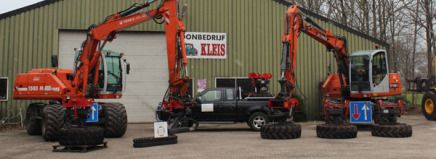ByTheWay…
How we got on the road
to roadside restoration ...
Our mission: safer verges, at a lower cost
ByTheWay wants to contribute to road safety. How? Through the development and operation of smart methods to repair dangerous verges; creating safer verges, at a lower cost.
We share the social benefits of our innovations with road managers and our partners. In our contracts with customers and partners, we balance all their different interests.
We invest a major part of our income into developing and improving our products. To achieve this, we work together with national and international students and knowledge institutes.
Are you interested in finding out if you could play a role in one of our projects? Great! Please contact us to see how we can help one another.
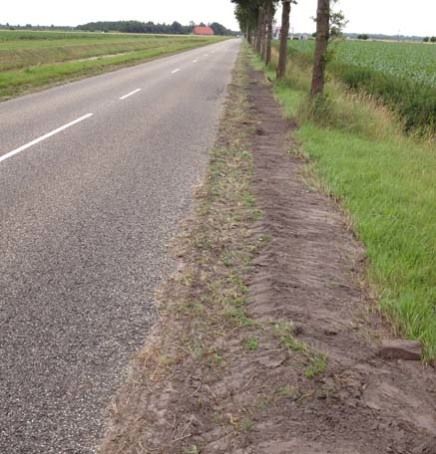
Part 1: Jan Kleis gets an assignment
Verges in the municipality of De Wolden used to be repaired by filling the holes with soil from elsewhere. However, after a short period this meant the verges needed to be lowered because rainwater collected on the road surface. A service contractor, Loonbedrijf Kleis, was hired to save costs. To fill holes next to the road surface, Jan Kleis moved soil from further up the verge with the tilting bucket of his mobile crane. This made the transition between the verge and the road safe again.
So, do you think Jan Kleis was a happy man?
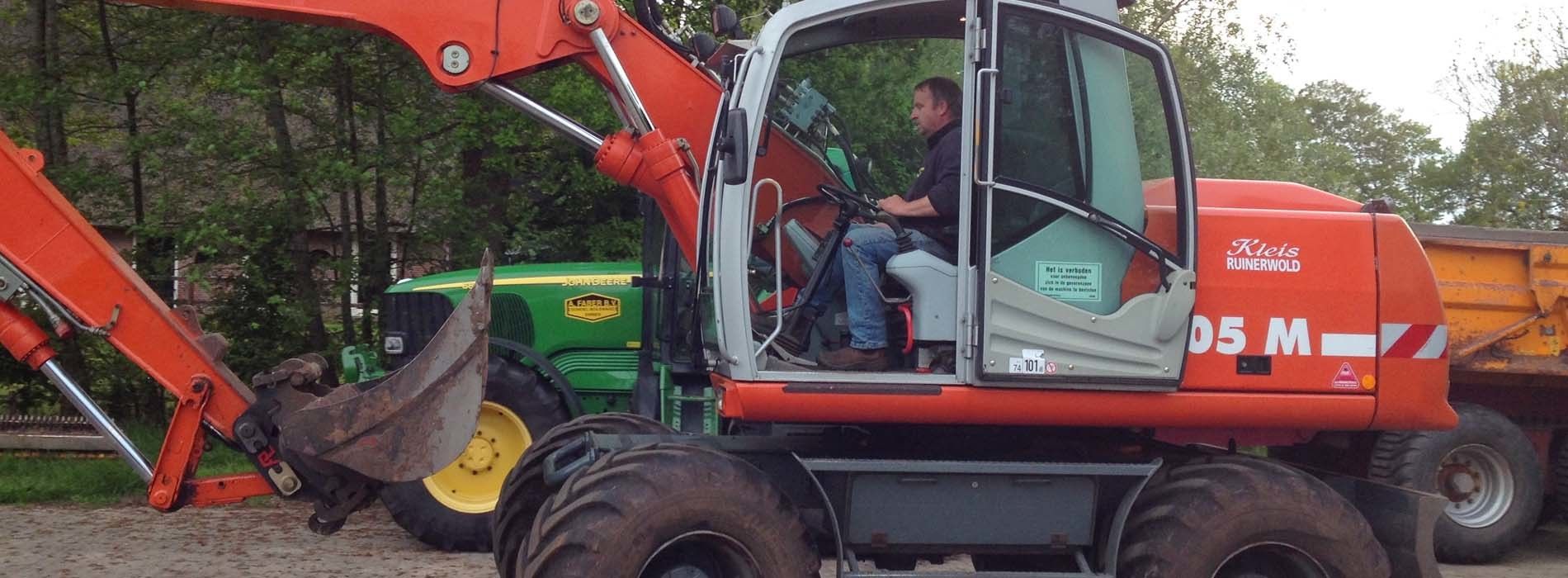
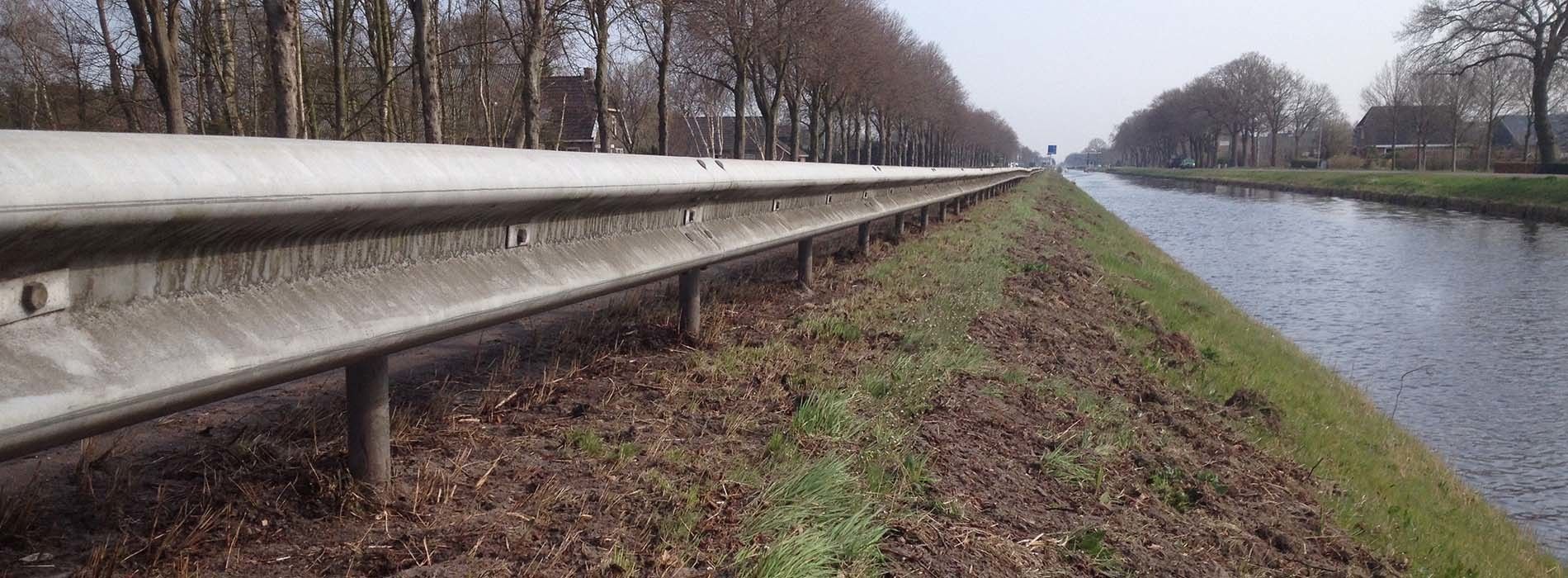
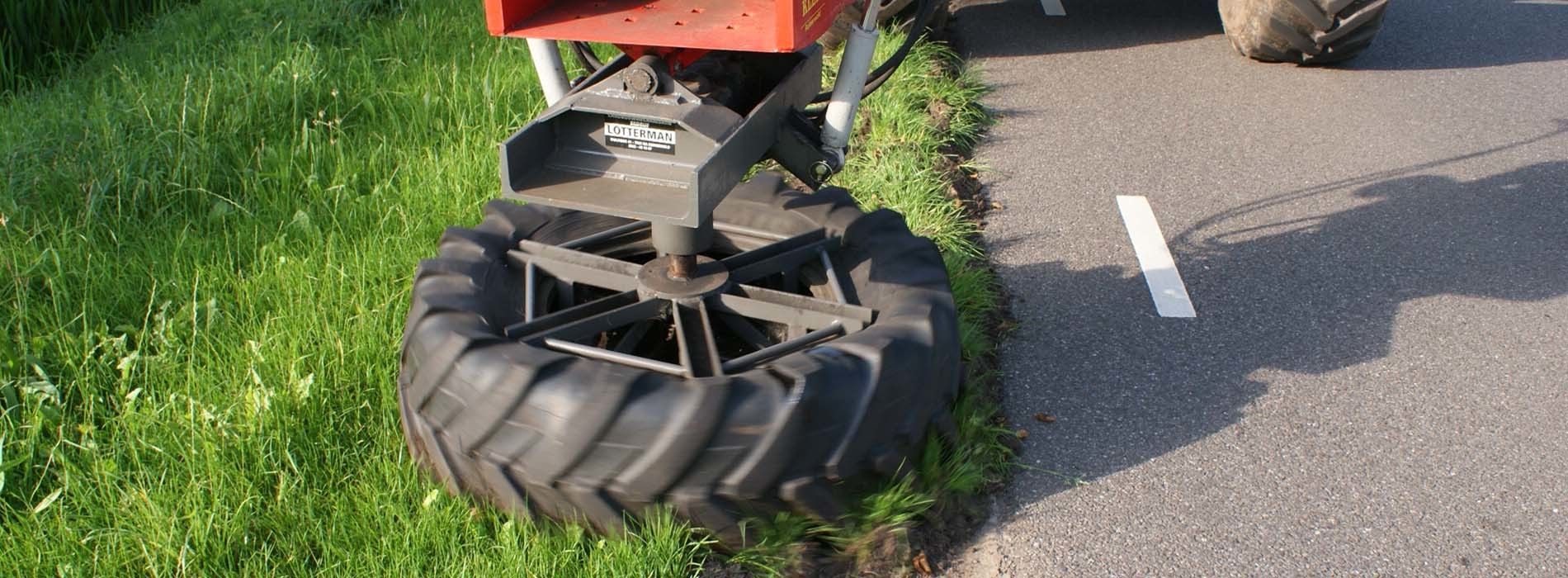
Part 2: The challenge Jan Kleis set himself
A tilting bucket glides over the grassy turf, or cuts at least 4 cm deep so that the turf is removed in large sections. With this process it is virtually impossible to fill the holes neatly with these large sections of turf and make a smooth transition between the verge and the road surface. In addition, this method also requires a lot of time (and consequently money), because 1 km of verge per day is often the limit.
“There must be a better way,” thought Jan. He discussed his concerns with the municipality. Tests were done to find a better and quicker way to repair verges. Verge cutters with augers and verge scrapers were tried, but all to no avail; the crane with the tilting bucket remained the most efficient method.
Even so, Jan Kleis eventually found a better and faster method of repairing verges.
Where do you think Jan found the inspiration for his idea?
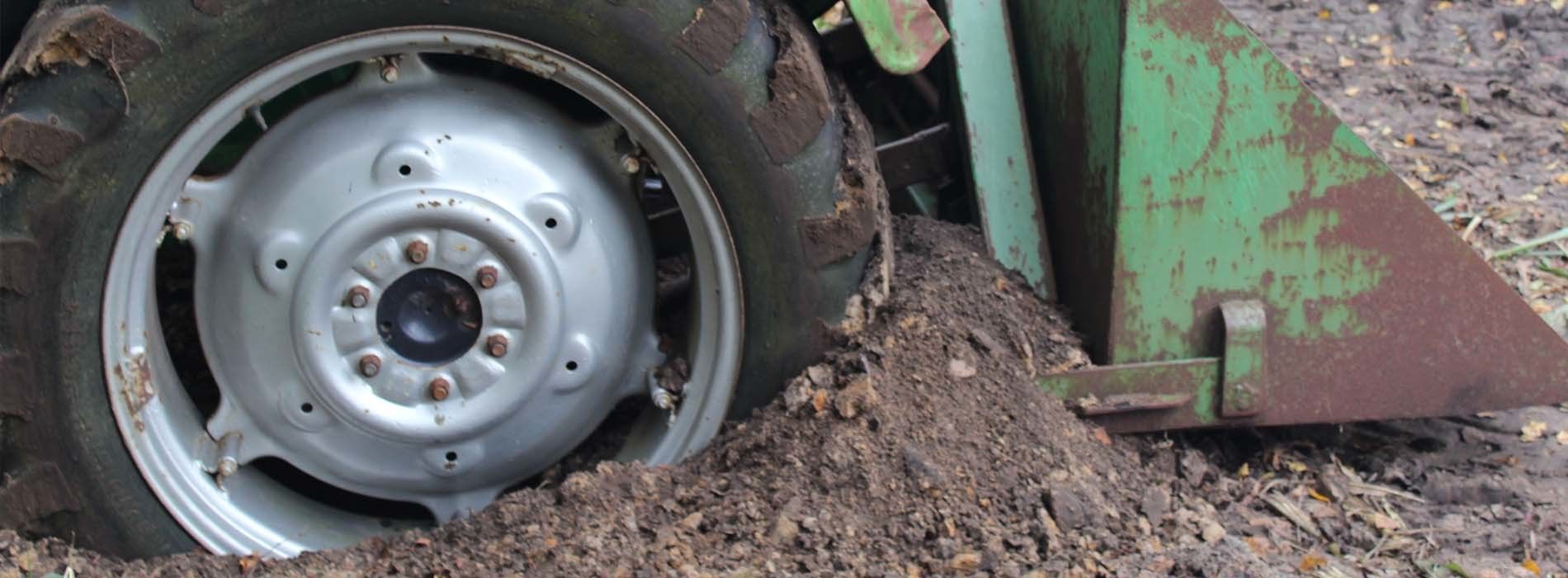
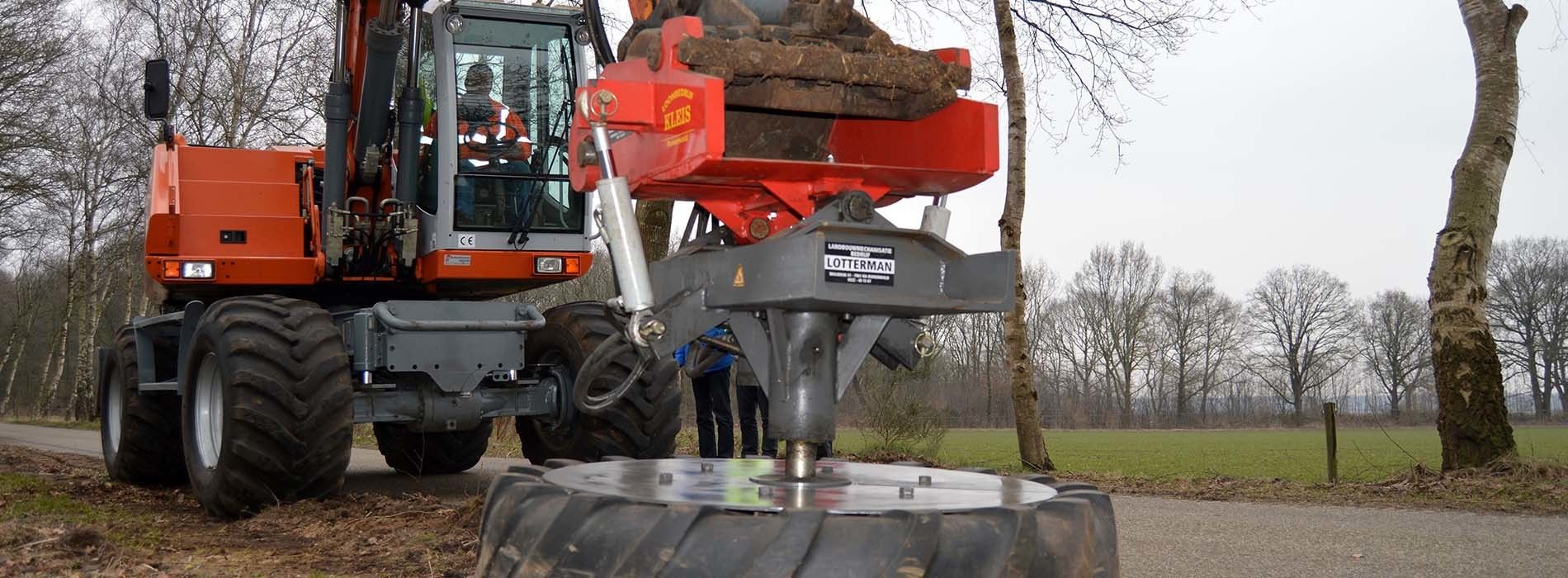
Part 3: Field, Cowshed & Lotterman
Indeed, it was both a cowshed and a field. As a service contractor, Jan Kleis was regularly hired by farms. He saw how the feed for the cows was moved with a floor-mounted horizontal conveyor belt. He also knew only too well that a tractor tyre could shift an unbelievable amount of soil when a tractor gets stuck in a muddy field.
He put one and one together, and eureka: the idea for a new type of machine was born.
Jan Kleis visited local engineering firm Lotterman with his idea. Sander Lotterman gave it some thought, and realised the potential. He started working on the design, and built a prototype.
The moment came. They were able to start testing the machine, first alone and then in the presence of employees of the municipality of De Wolden. So, what do you think, was it a success?
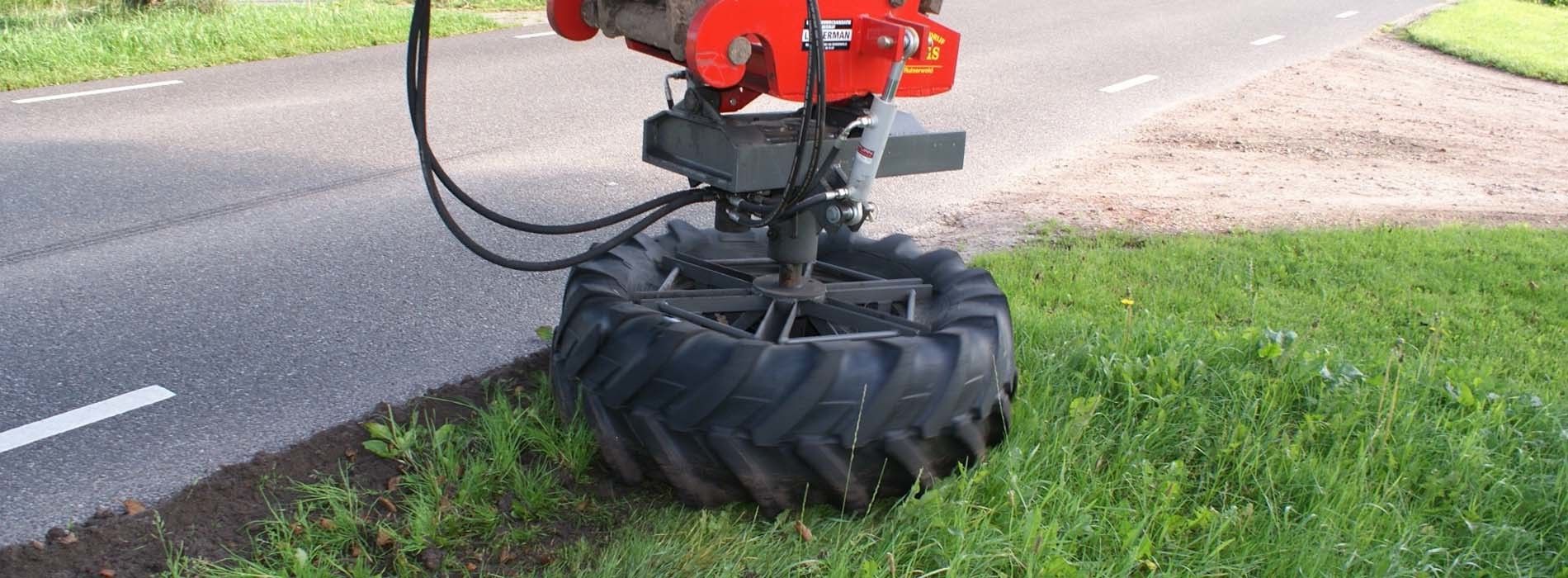
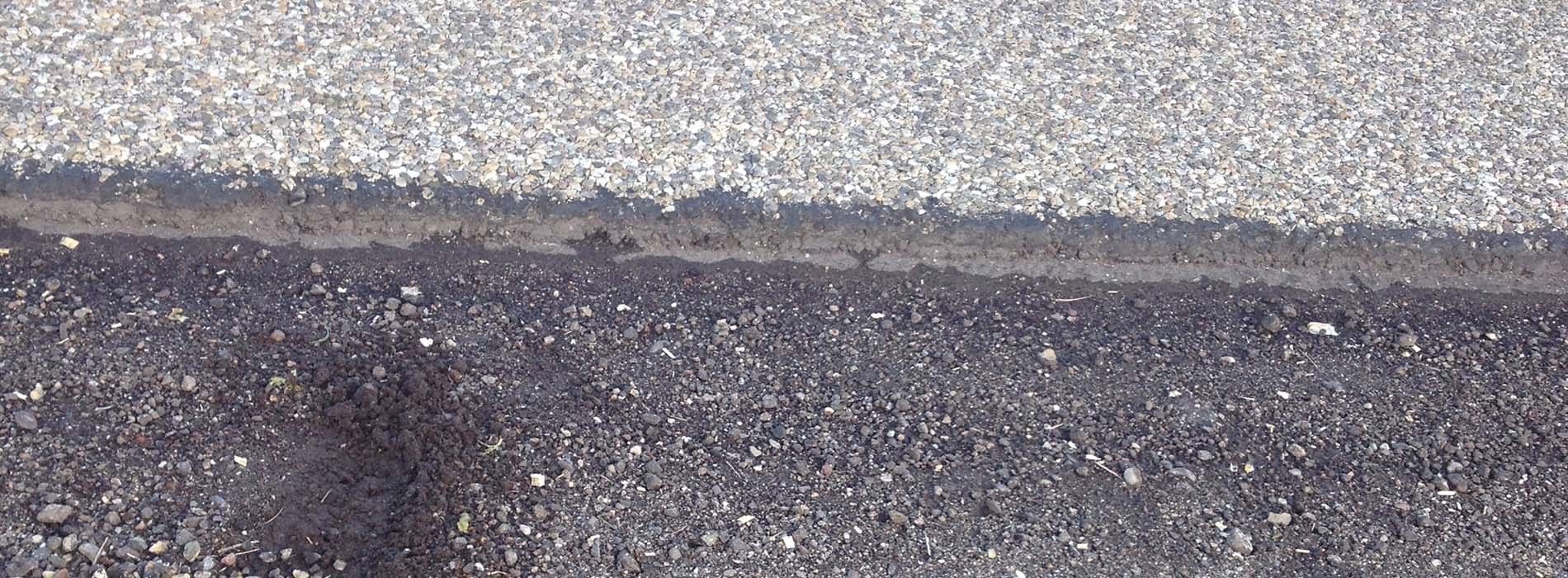
Part 4: Success and patent
The machine worked much better than expected, and all those present realised it was a eureka moment. The enthusiasm among the employees of the municipality of De Wolden was decisive. The first orders were placed immediately, and in passing, a brand new Dutch verb was invented: ‘kleisen’ (to kleis), after the inventor.
Harm Lotterman had been following the process closely. He saw the potential of the invention, and stated to think about how it could be exploited. The three decided to work together, and from that moment on things started moving quickly. The roles: Loonbedrijf Kleis is responsible for repairing verges in De Wolden and the surrounding areas, LMB Lotterman builds the machines and Harm Lotterman takes care of the patent, marketing and exploitation of the machines outside the municipality of De Wolden, both inside and outside of the Netherlands.
After some thorough research, Harm applied for a patent where Jan and Sander were recognised as the inventors. The machine is named after its inventor, Jan Kleis, under the international registered trademark KLEISER®. The report of the international search for precedence indicated that the invention fulfilled the three criteria for a strong patent: new, innovative and industrially applicable. At the end of 2012, Harm founded his company ByTheWay BV.
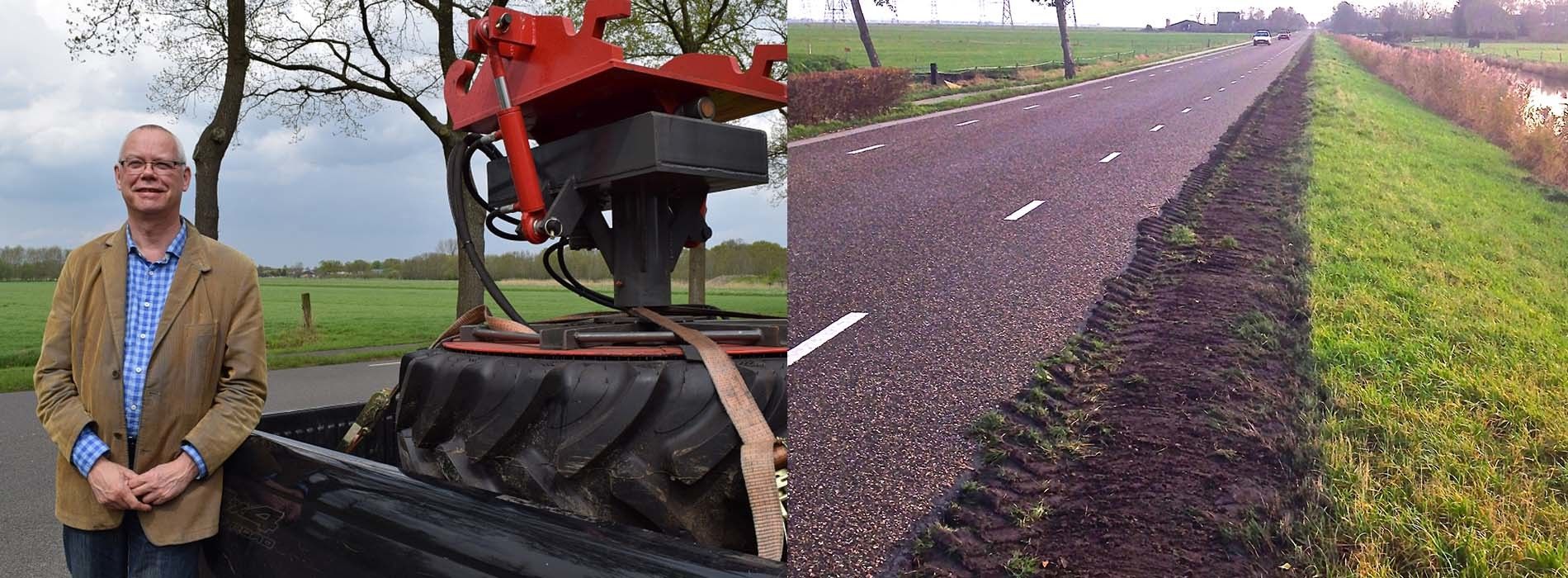
Part 5: ByTheWay extends its frontiers
Loonbedrijf Kleis carries out verge work in the regions of Drenthe, Overijssel North, South-East Friesland and the North-East Polder. Outside of this, ByTheWay works in the Netherlands on an exclusive basis with specially selected local partners who carry out work in their respective regions with the KLEISER®bh.
Three different KLEISER machines have now been designed to repair and make hazardous verges safe in areas unsuitable for the KLEISER®bh.
Would you like to know more?
Outside the Netherlands, ByTheWay conclude licensing agreements with partners who want to exploit the KLEISER® in their country or region. Within the EU, we can organise delivery of the machines. Rental or sales agreements for KLEISER® machines are also negotiable.
What we are doing now
With an eye to expand outside the Netherlands, we are seeking collaboration with professional manufacturers of equipment for hydraulic cranes which already have a position in this market. For countries outside Europe, it is also possible that a partner could take over one or more patents for the country concerned.
Would you like more information about who we collaborate with already?

